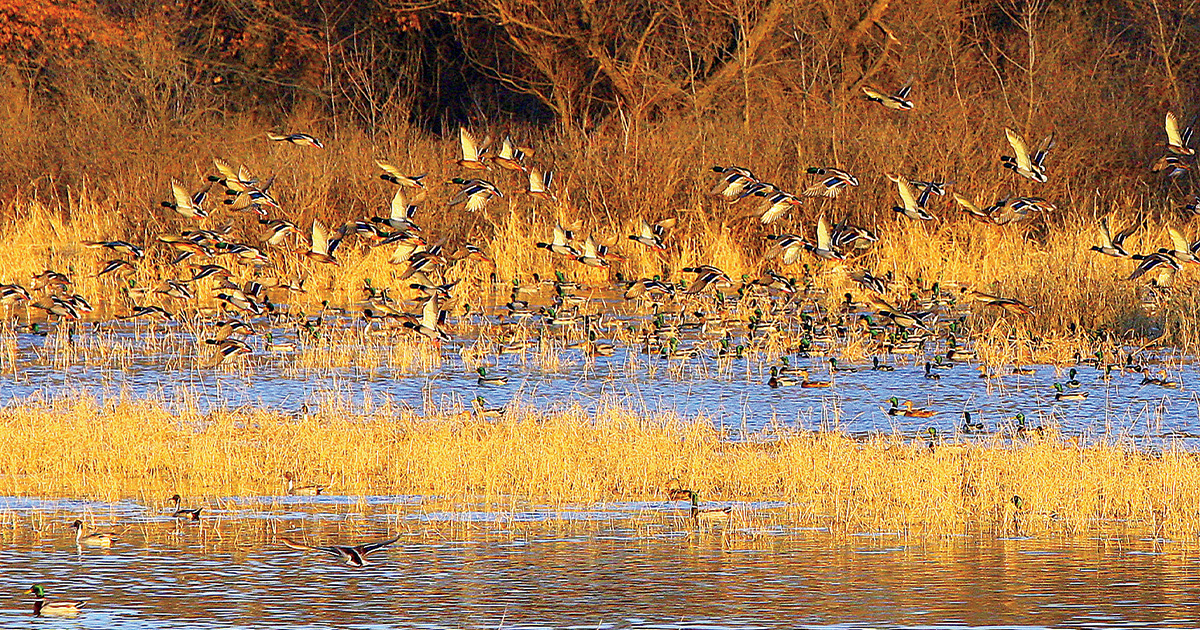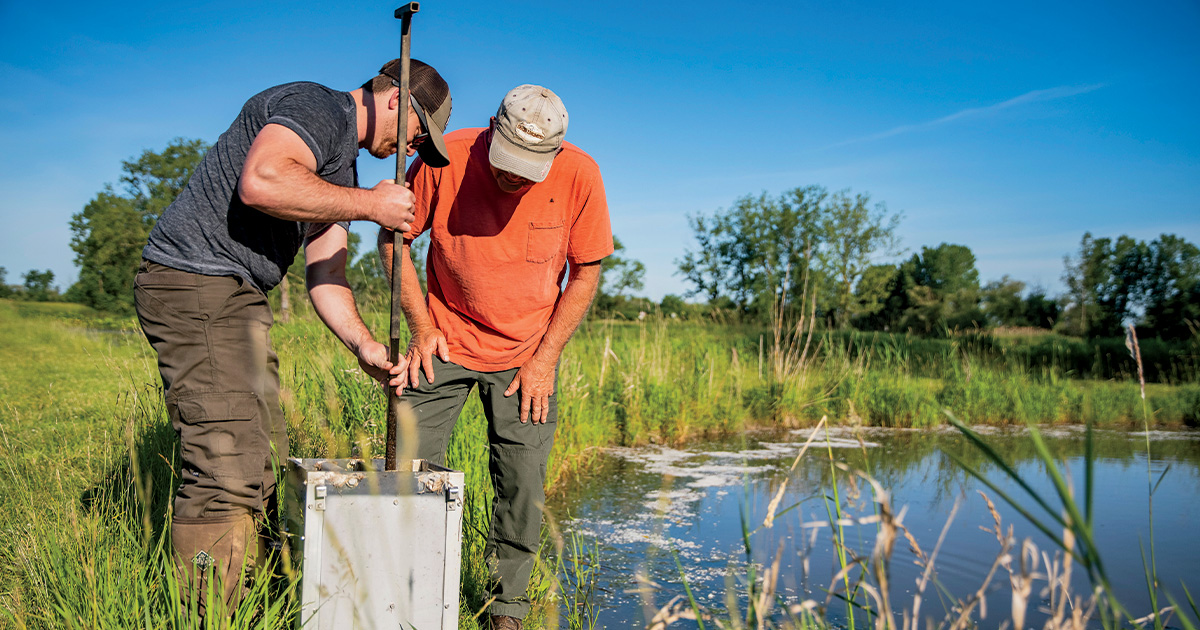Waterfowler's World: Setting the Table
How to improve and manage duck-attracting habitat on even the smallest hunting property
How to improve and manage duck-attracting habitat on even the smallest hunting property
By Bill Buckley

Managing water levels and planting the right kinds of food can turn your property into a duck magnet.
Successful management of wetland habitats to produce food for waterfowl depends on a few simple steps: drawing down water levels for planting, dispersing seeds at the right time, and then raising water levels in time for the ducks’ arrival. Many seed-producing plants are easy to grow and will vastly improve habitat, food diversity, and duck-drawing power wherever there’s temporarily exposed soil. Regardless of how much or how little you plant, waterfowl are likely to discover these new food sources, and their numbers will build over the years.
“The annual drawdown of wetlands in late spring and early summer is crucial to their food-production potential,” says Matt Kaminski, a DU biologist based in California’s San Joaquin Valley. “Exposing soils to air allows an array of naturally occurring seeds to germinate, including smartweed, millet, and panic grass. These plants are important seed producers as well as structure for invertebrates, which are valuable food sources for ducks in late winter and early spring. Exposed, muddy banks and wetland bottoms are also great places to broadcast seeds like Japanese or browntop millet.”
While some wetlands can be regulated via water-control structures, many seasonal wetlands and potholes naturally draw down in late spring through summer, exposing mud and soil that is ideal for growing plants. Beaver dams can also be breached in spring and early summer to drain swamps. If you can access wetlands with an ATV to disc harrow and turn over the top two to six inches of soil, Kaminski says, you’ll bring buried native seed banks to the surface, where they can germinate and add even more diversity to the mix.

MORE FOOD, MORE DUCKS: Use a planting mix designed specifically for waterfowl and raise the water level incrementally over the course of the hunting season.
When to draw down water depends on what plants you want to grow. In many parts of the country, early to mid-spring is perfect for stimulating smartweed and swamp timothy, while millet benefits from a drawdown later in the summer.
Another important consideration is when to direct water back into the wetland. Timing depends on what you plant or what comes up naturally, since a plant’s time from germination to maturity (as well as maximum seed production) can vary from about 60 to 90 days. For many properties, fall and early winter are the perfect time to capture runoff ahead of the migration, whether by delivering water or letting nature take its course. On large properties with water-control structures, raising water levels incrementally will keep food available for waterfowl throughout the hunting season.
“Here in Mississippi and most of the South, we won’t plant until August,” says Bobby Cole, president of Mossy Oak BioLogic. “In northern climates, planting in June or early July will give the plants enough warmth and sunlight to mature before the first frosts occur. For dry soil the clock starts ticking with the first rain, although if seeds are dispersed in mud they’ll germinate on their own. If the water is clear, you can also broadcast seeds in water up to three to four inches deep and they’ll still germinate.
“BioLogic Guide’s Choice is specifically tailored for waterfowl and will take 55 to 60 days to mature, so we use that as a guideline,” Cole continues. “Plant too early and the vegetation might lay down and start decomposing before migrating ducks can take full advantage. Plant too late and frost can kill it. Ultimately, the goal is to have the food and water in place as late as possible, so the groceries last the longest after the ducks show up.” The good news is that this seed mixture is easy to grow in even the toughest conditions, so once you plant or broadcast it, you can let nature take care of the rest.
Kaminski cautions hunters to find out if their hunting properties or leases are enrolled in any conservation easement programs, like the Wetlands Reserve Program. Many easements place restrictions on soil disturbance, water drawdown, and what and how much land can be planted. He also suggests reaching out to DU, the US Fish and Wildlife Service, Natural Resources Conservation Service, or state wildlife agencies for guidance on enhancing duck habitat. More great advice for growing wildlife food is available at plantbiologic.com and mossyoakgamekeeper.com.
Ducks Unlimited uses cookies to enhance your browsing experience, optimize site functionality, analyze traffic, and deliver personalized advertising through third parties. By continuing to use this site, you agree to our use of cookies. View Privacy Policy